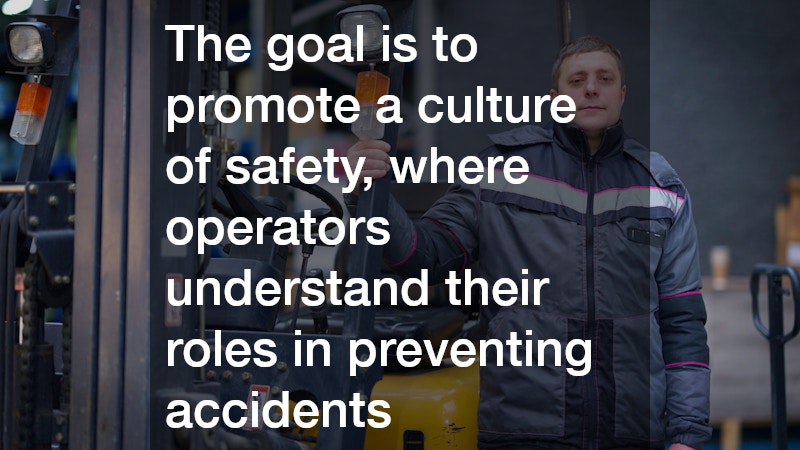Forklifts are essential pieces of equipment in many industries, helping move heavy loads with ease and efficiency. However, the improper use can lead to severe accidents, which not only endanger the operator but also those around them. By understanding and implementing key safety tips, operators can ensure a safer working environment while maintaining productivity.
Before stepping into this machine, operators must be thoroughly trained and familiar with the specific model they will be using. Different types may have unique attributes and handling characteristics, which require specific knowledge and experience. Proper training includes understanding all controls, maintaining visibility, and knowing how to handle the machine on various terrains.
Operators should always conduct a pre-operational inspection to ensure the machine is in safe working condition. This includes checking the brakes, steering, controls, warning devices, and tires to prevent mechanical failures. Consistent maintenance and quick repairs of any detected issues are vital for long-term safety.
Understanding the load capacity of the lift is essential. Overloading can result in significant accidents, potentially causing the machine to tip over. Operators should always refer to the load capacity chart and never assume it can handle a weight beyond its designed limit.
Prioritize the Use of Personal Protective Equipment
Personal protective equipment is non-negotiable when it comes to operation. Helmets, safety goggles, and high-visibility clothing play critical roles in protecting operators from potential dangers. Additionally, safety shoes with steel toes are recommended to prevent foot injuries from falling loads.
Operators must also utilize seatbelts during operation to prevent being thrown from the forklift in case of a collision or sudden stop. A seatbelt is a basic but essential piece of equipment that greatly enhances operator safety. Ensuring that the seatbelt is functional and used consistently should be a priority for all operators.
In environments where noise levels are high, hearing protection may be necessary to prevent long-term damage to hearing. Moreover, in particularly dusty or chemical-prone areas, respirators might be required to maintain respiratory health. By prioritizing PPE, the risk of injury can be significantly reduced, promoting a safer work site for everyone.
Adhere to Safe Driving Practices
Safe driving practices are vital in preventing accidents. Operators should always drive at safe speeds, avoid sudden movements, and be vigilant about their surroundings, especially in areas with high foot traffic. Speeding can lead to loss of control, increasing the risk of collisions and overturns.
Operators should also be aware of blind spots and use mirrors or cameras strategically to improve visibility. Proper signaling and horn usage when approaching intersections or blind corners ensures that other workers are aware of the machine’s presence, minimizing the risk of accidents. Additionally, maintaining a safe distance from other forklifts and vehicles is important to allow for adequate reaction time.
Driving on inclines requires special attention to maintain stability. When moving up or down ramps, the load should always be kept uphill, and the forklift should be driven at a slow, steady pace. These practices help in maintaining control and preventing spills or tip-overs.
Maintain a Clear and Organized Workspace
A cluttered or disorganized workspace increases the potential for accidents. Properly marked pathways and well-organized materials storage are essential for maintaining a safe work environment. It is important for operators to ensure that the pathways they are operating in are free from obstacles and debris that could impede movement or visibility.
Designated pedestrian zones and pathways help in managing traffic and reducing potential accidents between foot traffic and operations. Clear signage, floor markings, and the use of barriers where necessary are strategies that help organize the workflow efficiently and safely. Regularly inspect the working environment to ensure compliance with safety protocols and adapt to dynamic environments.
Additionally, keeping the forklift itself clean and free of spills or residues can prevent slips and falls when operators enter or exit the vehicle. Regular housekeeping practices not only facilitate a tidy workspace but also contribute to longevity. By maintaining an organized environment, all employees are better able to focus on safe operations rather than navigating unnecessary obstacles.
The importance of safety cannot be understated as it plays a crucial role in the overall safety of any industrial or warehouse setting. By following these essential safety tips, operators can significantly reduce the risk of accidents and ensure a secure working environment. Emphasizing proper training, PPE usage, safe driving practices, and workspace organization lays the foundation for effective operation.
Continuous learning and adherence to updated safety guidelines are necessary to keep up with evolving industry standards. Encouraging operators to participate in regular training sessions and safety workshops will reinforce their understanding of safe practices and familiarize them with new technologies or changes in safety legislation.
Ultimately, the goal is to promote a culture of safety, where forklift operators and all employees understand their roles in preventing workplace accidents. This commitment to safety results in fewer injuries, better morale, and increased productivity, benefiting employees and businesses alike.




